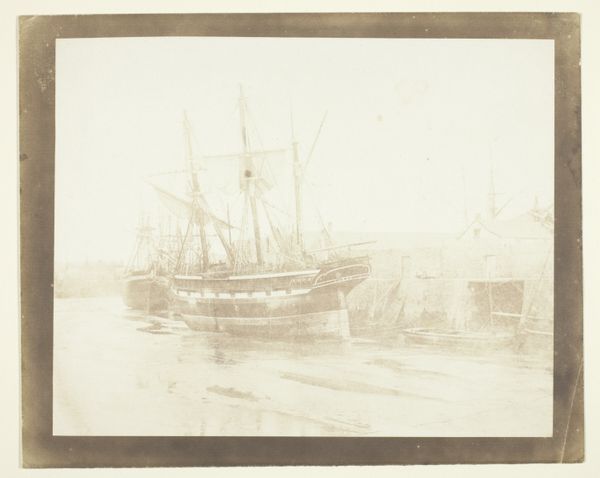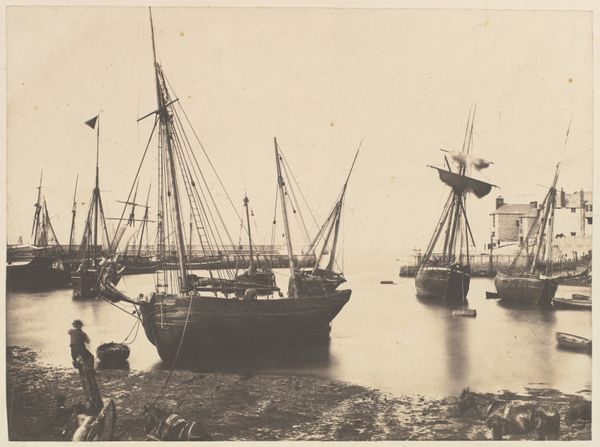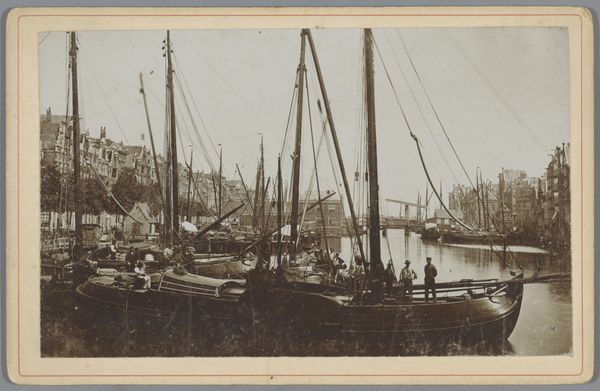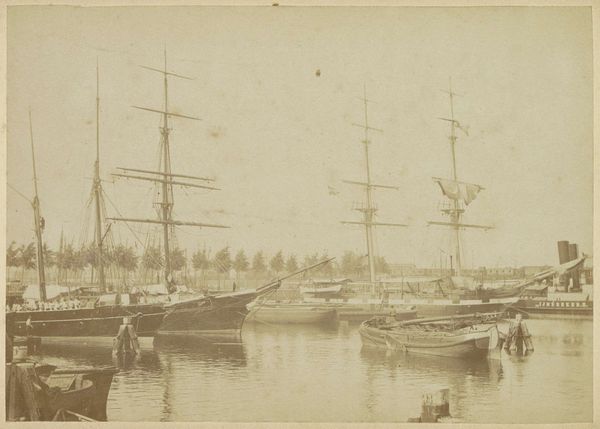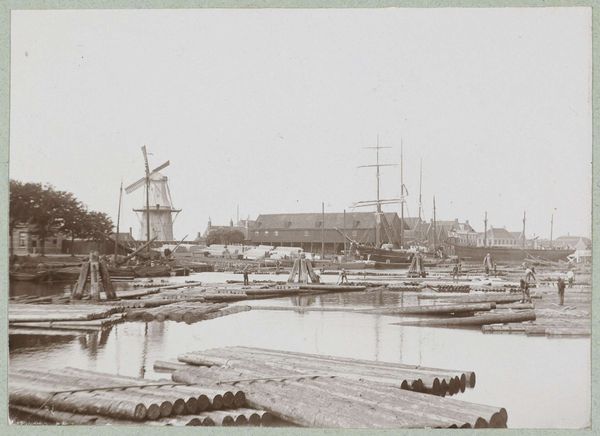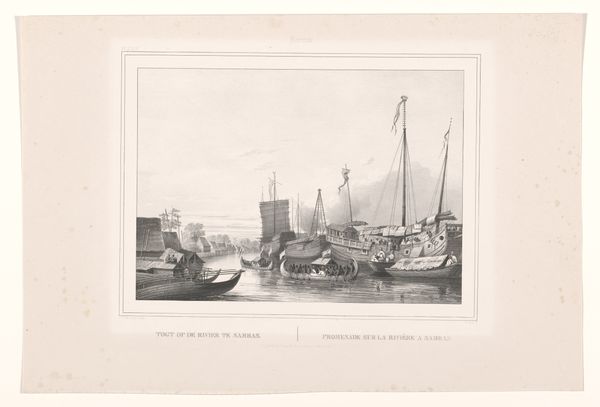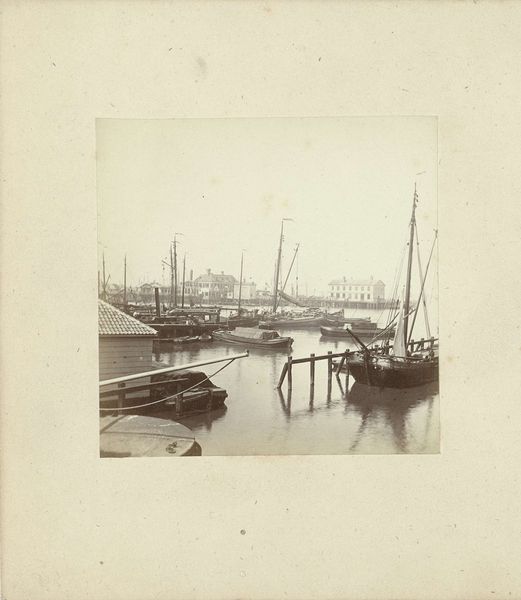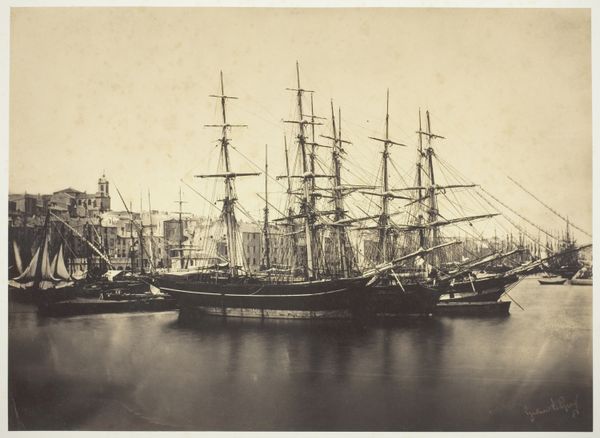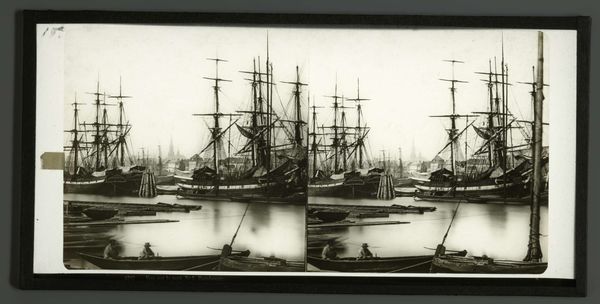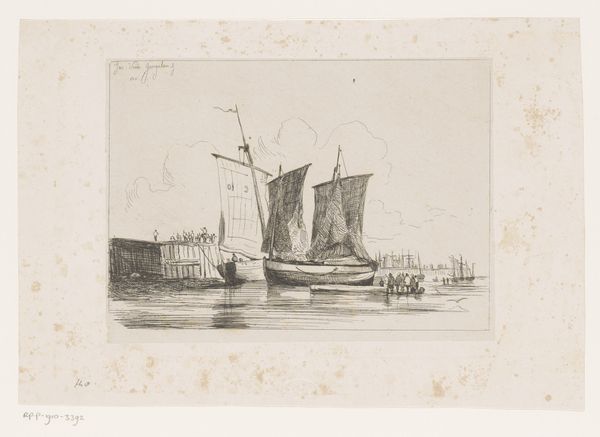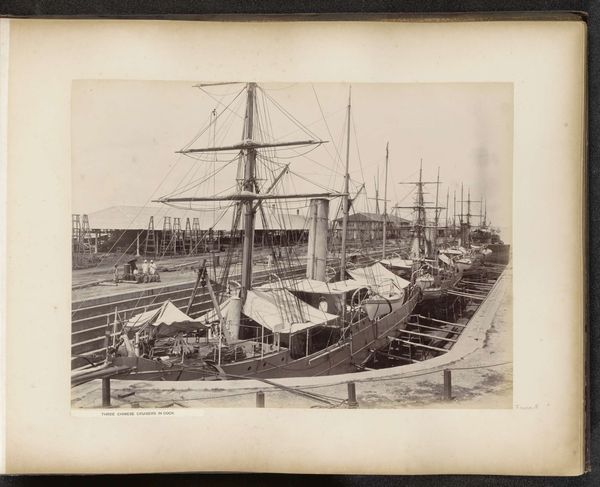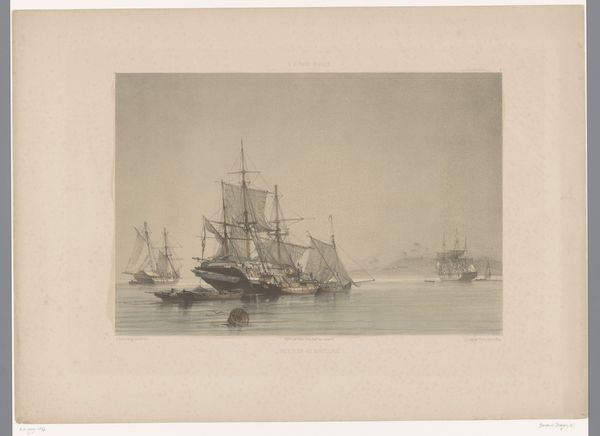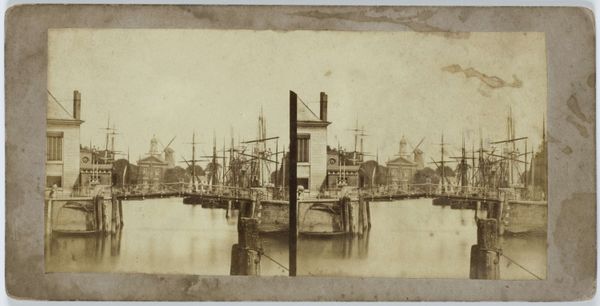
print, daguerreotype, photography
#
boat
# print
#
landscape
#
daguerreotype
#
photography
#
romanticism
#
cityscape
Dimensions: 16.3 x 17.8 cm (6 7/16 x 7 in. )
Copyright: Public Domain
Curator: We’re looking at William Henry Fox Talbot's "The Seine at Rouen" from 1843, a daguerreotype currently residing at the Metropolitan Museum of Art. Editor: My immediate impression is of stillness, despite the subject. The tones are muted, sepia leaning towards gray. The arrangement, while depicting a port, almost feels frozen, quieted. Curator: Exactly! Notice how Talbot captured this bustling port city. By the 1840s, photography offered new ways of depicting industrial production. It allows one to consider the raw materials seen here in relation to their potential transformation into finished goods ready for export. We are not simply observing aesthetics but capturing capital in action. Editor: I see a powerful symbol of transformation and the bridging of worlds. The ships represent journeys, both literal voyages and the abstract journey of commerce. Those masts reaching skyward – don’t they echo cathedral spires, a testament to ambition, the pursuit of both earthly and spiritual wealth? Curator: I appreciate that reading. The stacks of what look like barrels, and the way the ropes and wooden structures are built all highlight a particular process. Also, one of the things that’s crucial to note is that these objects become pictorial through chemical and optical processes—these early photographic materials have to be considered in relation to the socio-technical processes needed to render images at this time. Editor: The chemical processes involved certainly have their alchemical resonance. Think about it, creating light out of silver! The boats clustered at the shore make me contemplate thresholds—points of departure, ports of call, moments suspended. They invoke the stories held within vessels. Curator: Precisely! By fixing the port in a single frame, we capture its function—its utility and purpose. We witness a society that organizes itself around the principles of industrial exchange, a society visualized in shades of grey through the photographic lens and silver plate. Editor: It makes you wonder about the individual stories woven into this scene – the sailors, the merchants, all connected through this trade network, now preserved ephemerally, forever held. Curator: That interplay is essential; we move from analyzing structure to considering lives implicated within this global structure. Editor: Yes, there’s a beautiful paradox to photography, the means of material capturing revealing intangible, enduring concepts like memory, connection and industry, that bind humanity together.
Comments
No comments
Be the first to comment and join the conversation on the ultimate creative platform.
